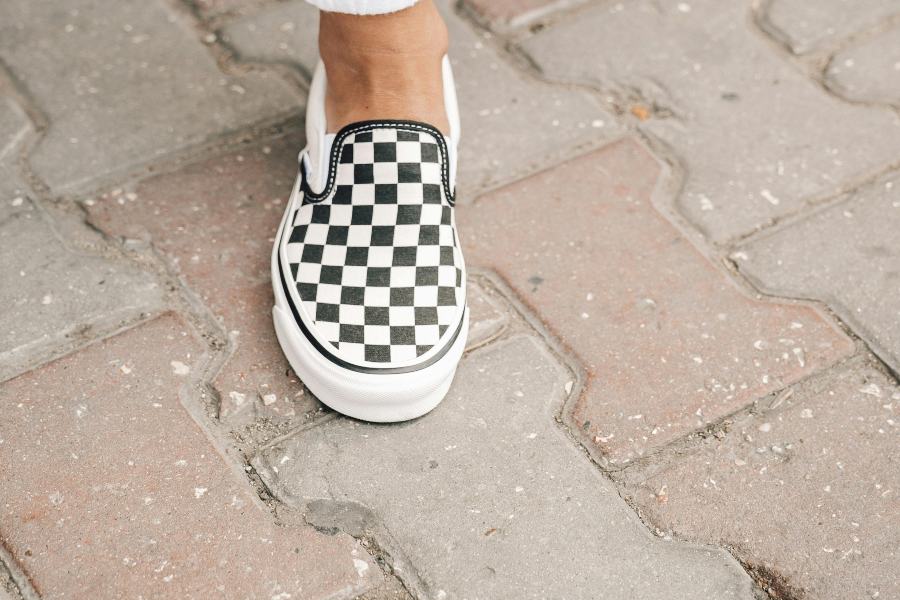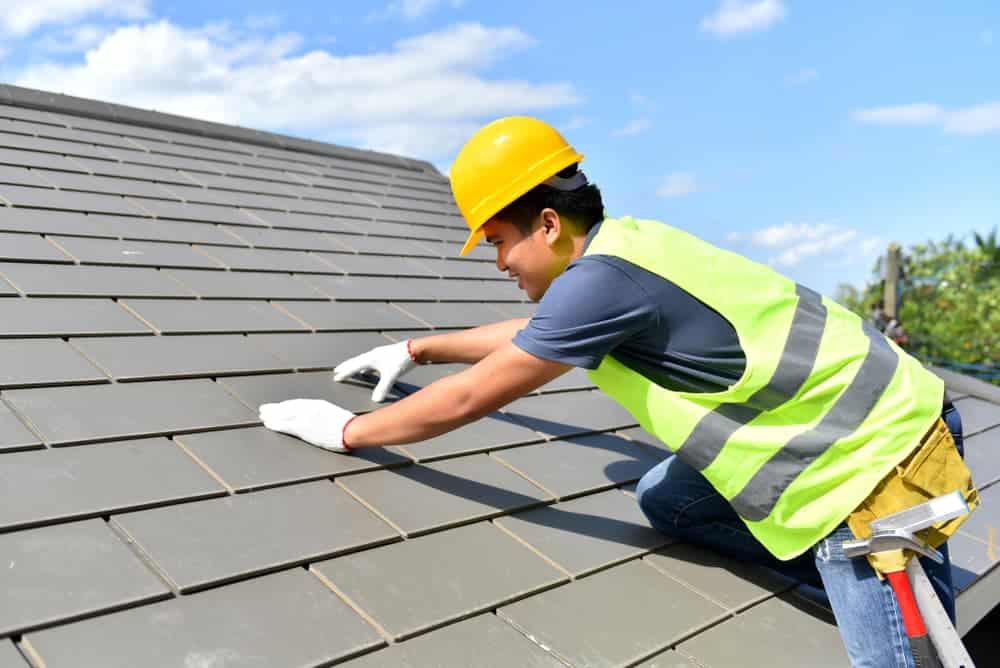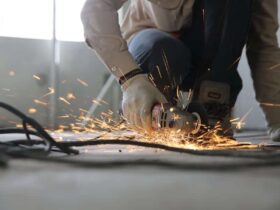To safely walk on a slate roof, use a “chicken ladder” or gear setup to prevent damage. Walking on a slate roof can cause cracking and should be avoided if possible.
Slate roofs are both durable and brittle, meaning they can last for over a hundred years but can quickly crack under pressure, possibly resulting in damage to your home’s structure. To safely work on a slate roof, you can use a “chicken ladder” or gear setup, which offers enhanced safety to ensure that workers can gain secure hand and footholds during the repairing process, avoiding any unintentional damage to the roof.
However, walking on a slate roof should generally be avoided wherever possible. We will discuss how to safely work on a slate roof and the risks of walking on one.
Understanding Slate Roof Walking
Walking on a slate roof requires caution and proper gear to avoid damaging the tiles. Keep the roof dry and wear sensible trousers, as slate can crack under pressure. Consider using a ladder hook for secure footing during repairs.
Potential Damage To Slate Roof
Walking on a slate roof can cause potential damage, especially if the roof is old or in poor condition. One wrong step could result in cracks, breaks, or dislodged slates that may require costly repairs. The concentrated weight of a person’s foot can cause damage to the slate’s structure, leading to leaks or other structural problems. Additionally, slate roofs can be slippery, and walking on them can be dangerous, increasing the risk of falling or slipping. Therefore, it is crucial to take proper safety measures while walking on a slate roof.
Safety Measures For Walking On A Slate Roof
Before walking on a slate roof, one must ensure that they have the appropriate gear to avoid damaging the roof. A painter’s scaffold or roof ladder should be used to distribute the weight evenly and prevent concentrated foot pressure on the slate surface. It is also essential to wear sensible work trousers and shoes with adequate grip to prevent any slips or trips on the roof. Moreover, it is advisable to check the structural integrity of the roof before walking on it. One can check the rafter spacing by crawling delicately on the slates and avoiding any weight-bearing. It is vital to identify safe positions where the rafters are and sit on them to distribute weight evenly. Finally, wait for the roof to dry before starting to work on it and avoid working on a wet, slippery surface.
In conclusion, walking on a slate roof requires proper safety measures and gear to avoid potential damage to the roof’s structure and the risk of injury. One must take necessary precautions, such as wearing the appropriate gear and using a painter’s scaffold or roof ladder, before attempting to walk on a slate roof. By following these safety measures, one can prevent unnecessary damage to the roof and ensure that it remains durable and long-lasting.

Credit: cleanslatecampaign.org
Preparatory Measures
Before walking on a slate roof, some preparatory measures must be taken to ensure safety and minimize damage. Here are some crucial steps to follow:
Inspecting The Roof Structure
Before venturing onto the roof, inspect the roof structure and note the safety features such as guardrails or anchor points. Confirm that the roof is stable and can support your weight. You should also check the condition of the roof tiles or slates to avoid walking on damaged areas. If it’s possible, try to avoid walking near the edges of the roof to reduce the risk of falling.
Checking For Weather Conditions
Before ascending the roof, make sure to check the weather conditions. Avoid walking on a slate roof on rainy, damp or windy days. Moisture decreases the roof’s traction, increasing the risk of slipping. Ensure the slate roof is dry before walking on it.
Wear Suitable Clothing And Footwear
When walking on a slate roof, wear appropriate clothing such as non-slip trousers, gloves, and a hard hat. Your clothing should fit well enough to maintain flexibility and comfort while keeping you safe. Footwear is also essential; opt for non-slip boots or shoes to increase traction while walking on the slate roof. Avoid wearing high heels, sandals, or running shoes with worn-out soles.
In conclusion, walking on slate roofs can be hazardous and can lead to severe damages. Take these preparatory measures to ensure a safe and successful roof walk.
Tips For Walking On Slate Roof
Walking on a slate roof can be a tricky and dangerous task if not done properly. Ensure to have the right gear and utilize a chicken ladder hook for enhanced safety. It is recommended to avoid walking on a slate roof to prevent damage or cracks on the delicate surface.
As beautiful as slate roofs are, they can be a tricky walking surface, and walking on them is best left to professionals. However, if you’re trying to assess damage or perform small repairs, there are a few safety tips to keep in mind to prevent breaking or cracking the slate tiles. In this post, we will discuss tips for walking on a slate roof. It is important to note that these tips are not a substitute for proper training or professional-grade safety equipment.
Distribute Your Weight Evenly
Slate tiles are delicate and can crack under pressure. When walking on a slate roof, it’s important to distribute your weight evenly to avoid putting too much pressure on any one tile. One way to do this is to walk on the bottom third of the slate tile, where it is strongest, using your toes to support your weight. Spread your feet shoulder-width apart to help maintain your balance.
Use A Chicken Ladder For Sloping Roofs
If you’re working on a sloping roof, consider using a chicken ladder. A chicken ladder is a curved ladder that hooks over the roof ridge, providing a secure hand and foothold for you to work on the roof. It helps you stay centered on the ladder, providing you with enough footing to complete the task at hand.
Remaining On Rafters And Battens
Walking or stepping on slate tiles can damage or crack them easily. This is especially true if your slate roof is very old. To avoid causing damage, always try to walk on the battens or rafters. Not only does this distribute your weight more evenly, but it also gives you more support while you work on the roof.
Avoid Walking On Wet, Icy, Or Snow-covered Roof
Walking on a wet or snow-covered slate roof can be extremely dangerous. Wet roofs are slippery and walking on them can cause you to lose your balance and fall. Similarly, if the roof is covered in ice or snow, stepping on it can cause the slate tiles to crack or shatter. If you need to work on the roof during winter, it’s better to use a professional-grade snow removal service to clear the roof first.
In conclusion, walking on a slate roof is a daunting task and should be left to trained professionals. However, if you need to walk on the roof, be sure to keep these tips in mind to prevent causing damage to the tiles or hurting yourself. Remember, safety comes first, and it’s always better to be safe than sorry.

Credit: roofmaster.ca
Common Mistakes To Avoid
Walking on a slate roof can be risky, so it’s important to avoid common mistakes. Use proper gear to avoid damaging the roof, check the structure carefully, and be mindful of the weight you put on it. For safety, always use a ladder or other stability tool when walking on a slate roof.
Common Mistakes to Avoid When Walking on a Slate Roof
Walking on a slate roof may seem like an easy task, but it requires extra caution and careful consideration to avoid damages and accidents. Here are some common mistakes that you should avoid when walking on a slate roof.
Using Steep Slope Ladder
As you prepare to access your slate roof, using a steep slope ladder can make it challenging to maintain balance and increase the chances of falling. This common mistake can pose a severe threat to your safety and result in damaged roof tiles. Instead, choose a ladder with a wider base and a flat top to prevent wobbling or slipping.
Walking Too Quickly or Vigorously
Walking too fast or with too much force can cause damage to the slate roof tiles. These tiles are delicate and prone to cracking under pressure. It’s best to take your time when walking on the roof. Keep your pace smooth and steady and avoid jumping, running, or dragging your feet.
Leaning Slates Against the Wall
Another common mistake when walking on a slate roof is leaning the slates against the wall. This can result in damaged or broken tiles, as they are likely to crack or break under excessive weight. If you need to rest, place the ladder against the roof to lean on instead of leaning on the tiles.
Ignoring Damage to Slates
Lastly, ignoring any damages to slate tiles can be a costly mistake. Walking on a roof with broken or damaged slates can result in severe accidents and further damage to the roof. If you notice any cracks or broken slates, it’s best to repair them before walking on the roof.
In conclusion, walking on a slate roof requires extra care and attention to avoid damages or accidents. By avoiding the common mistakes mentioned above and following proper safety measures, you can ensure a safe and successful experience when walking on a slate roof.
Alternative Roof Work Methods
Walking on a slate roof is not recommended as the tiles can crack under pressure. New-age roofers prefer using a “chicken ladder” during slate roof repairs to gain secure hands and footholds and offer enhanced safety to the roofers. Additionally, it’s important to wear sensible trousers and check the structure of the roof before walking on it.
Walking on a slate roof to perform any maintenance work can be challenging and risky. It’s not only tricky to maintain balance, but it is also unsafe. Hence, alternative roof work methods are available to reduce the risks associated with walking on the slate roof. Two popular alternative methods are:
Use Of Scaffolding
Scaffolding is a great alternative to improve the safety of workers. Scaffolding is set up around the roofing area and is a great way to reduce the risk of slipping and falling while climbing up the roof. It also helps to ensure that the slate roof doesn’t sustain any damage which can occur while walking on the roof. The cost of scaffolding can vary based on the coverage required, but the cost is not as high as one may perceive, and in the long run, it is worth the investment.
Hiring Professional Roofers
If you’re not comfortable or confident walking on the slate roof, it’s best to hire professional roofers who have vast experience with slate roofing. Professional roofers are equipped with the right equipment and knowledge of the building structure. Hiring a roofer not only reduces the risk of falling but also ensures the safety of the slate roof. Professional roofers have extensive knowledge of repairing slate roofs, and they can repair your roof without causing any damage. Therefore, it is essential to engage with a professional roofer for efficiency, effectiveness, and safety.
In conclusion, using a scaffolding or hiring professional roofers are safer alternatives when maintaining slate roofs. While scaffolding requires some investment, hiring a professional roofer helps to reduce the risks associated with walking on a slate roof. Ultimately, it’s essential to prioritize the safety of workers and the protection of the slate roof over cost and convenience when considering alternative roof work methods.
Frequently Asked Questions On How To Walk On Slate Roof
Is It Okay To Walk On A Slate Roof?
It is not recommended to walk on a slate roof as it can cause cracks or damage to the roof. Synthetic or imitation slate roofs may be less fragile, but caution should still be exercised. Use a chicken ladder or other gear to ensure safety during repairs.
How To Safely Work On A Slate Roof?
To safely work on a slate roof, use a ladder that hooks over the roof ridge to have a secure foothold. Wear sensible trousers and check the roof’s structure, spacing, and where the rafters are before sitting on them. Make sure the roof is dry and don’t walk on slates to avoid cracking or damage to the roof. Consider consulting a professional to repair or maintain the roof.
Is Slate Easy To Walk On?
Walking on a slate roof can cause damage as it is as brittle as it is durable. A well-maintained slate roof can last over a hundred years but the precise and localized force of a footstep can cause cracks. New-age roofers use a “chicken ladder” during slate roof repairs for added safety. Avoid walking on a slate roof unless necessary.
How Do You Put A Ladder On A Slate Roof?
To put a ladder on a slate roof, use a “chicken ladder” that hooks over the roof ridge and provides secure hand and footholds during the repair process. It is important to wear sensible trousers and check the rafter spacing before sitting on the rafters.
Additionally, make sure the roof is dry before attempting any repairs or maintenance to avoid slipping and potential damage to the slate roof, which can be brittle and crack under pressure. Avoid walking on slate roofs whenever possible.
Can You Walk On A Slate Roof Without Damaging It?
While it is possible to walk on a slate roof without damaging it, it is highly discouraged. Slate roofs can be easily damaged due to the precise and localized force exerted by a footstep.
Conclusion
Walking on a slate roof should be avoided if possible. However, if it is necessary to walk on the roof, it’s important to take all necessary safety precautions. Make sure to wear proper footwear, check the roof’s structural integrity beforehand, and use a safe method of access such as a chicken ladder.
It’s crucial to handle the delicate slate with care and avoid causing any damage that could lead to costly repairs. By following these guidelines, you can safely walk on a slate roof without causing any harm.









Leave a Reply